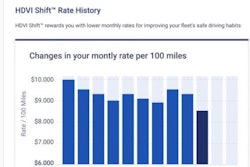Truck capacity is stretched tight and motor carriers are heading into peak retail season with a full head of steam. Just how tight is it?
A leading indicator, Truckstop.com’s outbound tender rejection index (OTRI), currently stands at 22.48. The normal market rate is 5%. Truckstop.com’s market data also shows that spot rates have gone up an average of 20%, year-over-year, for all freight sectors.
An internal metric used by logistics service providers (LSPs) daily to gauge capacity is their percentage of pre-booked loads. The lower the percentage, the more work it takes to find trucks to cover loads.
“We are seeing a lot more of that work being done,” said Mark Ford, chief operating officer of BlueGrace Logistics, a Tampa, Florida-based logistics service provider (LSP) that manages less-than-truckload, truckload and multi-modal dry van, refrigerated and specialized flatbed freight for shippers.
LSPs are paying higher freight rates but are being inundated with business from shippers who are getting a high percentage of their load tenders rejected by contract carriers and dealing with other supply chain disruptions.
“Pretty much every shipper is forced to re-evaluate the way they do business,” said Will Kerr, president of Edge Logistics, an LSP headquartered in Chicago. “They are open to new ideas, technology, and new ways of thinking.”










